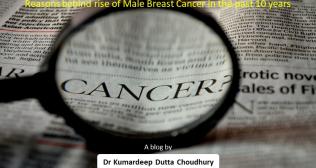Pancytopenia In Children, Pointer Towards Leukemia
A 5 year old girl child presented with a history of fever of 15-day duration and gum bleeding since 1 day.
The fever was high grade, intermittent, and was associated with diffuse aching in her arms, legs, and back since 2 weeks. The child had been active between fever spikes but was refusing to walk since the previous 2 days. She had been treated with intravenous (IV) antibiotics and antimalarial drugs for 1 week before she presented to us. She was noticed to have gum bleeding by her parents on the morning of presentation. The child was irritable and uncooperative. She was afebrile. There was pallor but she did not have icterus, edema or lymphadenopathy. There were large ecchymotic patches on her left lower limb and she also had a few petechiae on her arms and trunk. There was bony tenderness over the shins and the sternum. There was mild hepatosplenomegaly. The rest of the systemic examination was normal.
Investigation:
-
CBC: Hb 7.4 gm%, TLC 3200 /cmm (P10%, L80%) with no abnormal cells on smear, Platelet count 15000/cmm
- LFT, Creatinine normal
- Uric acid 8 mg/dl, LDH 780 U/L
- Radiographs of long bones reveal osteolytic lesions and radiolucent metaphyseal growth arrest lines.
Differential Diagnosis:
- Acute leukemia
- Aplastic anemia
- Hemophagocytic Lymphohistiocytosis
- Gaucher’s disease
- Lead poisoning
Further Evaluation: Bone marrow aspiration and biopsy
- Immunophenotyping: Pre B ALL CD10, CD19, CD20 +ve
- Cytogenetics: Normal karyotype
Final Diagnosis: Pre B ALL without CNS involvement stratified as Standard Risk
Treatment:
The patient was started on induction chemotherapy along with intrathecal chemotherapy as prophylaxis for CNS spread. She responded well to treatment and achieved molecular remission (minimal residual disease was negative) at end of induction. She completed total treatment of 2 years and is in complete remission.
Discussion:
- Leukemia is most common childhood cancer accounting for 29% of all childhood cancers; approx. 2500-3500 cases per year.
- Peak age 2-5 years
- More likely associated with in Trisomy 21, Ataxia-Telangiectasia, Bloom syndrome, Fanconi anemia. Always look for cutaneous markers and dysmorphic features.
- Treatment:
- Induction: 4-6 weeks, 95% remission; Vincristine,Corticosteroids, L-Asparaginase and Anthracycline
- Consolidation /delayed Intensification:6-12 months; rotating drugs.
- Maintenance: Daily oral 6-MP, weekly MTX, Monthly pulses of Vincristine and Steroid.
- CNS prophylaxis: Intrathecal chemo
- CNS Therapy: Systemic chemo +RT
- Prognosis:
- Very low risk: 90% survival
- Standard risk: 85 % survival
- High risk: 65 % survival
Learning Point:
- While investigating child with pyrexia of unknown origin we need to keep a low threshold for bone marrow examination. This that helps in the early diagnosis of leukemia.
- If childhood malignancies are diagnosed and treated early then they may have very good prognosis.
Author-
Dr Sunil P Udgire
Consultant- Pediatric Oncologist, Hematologist and BMT Physician,
Fortis Hospital, Bangalore.



















